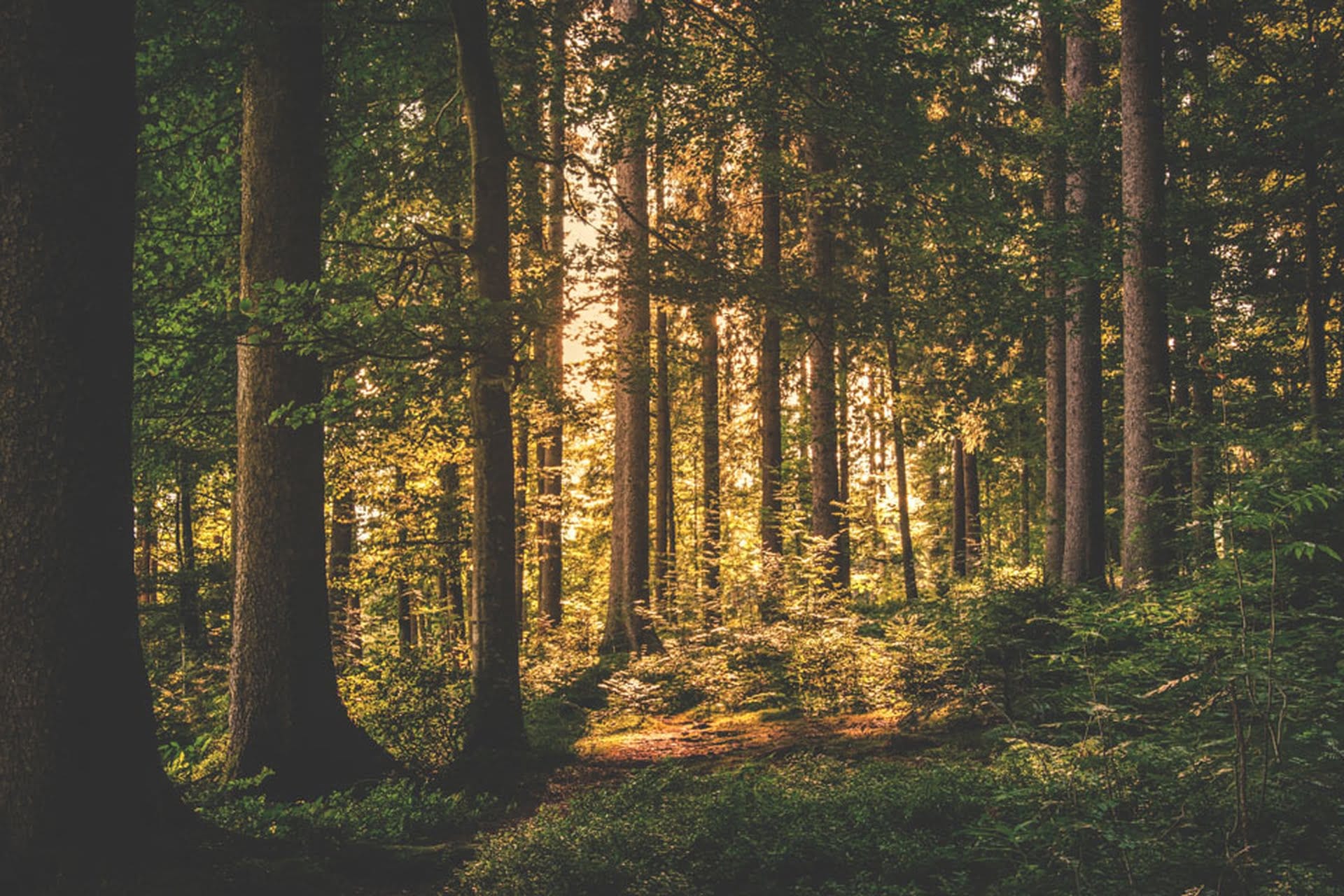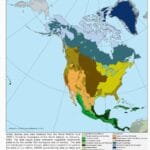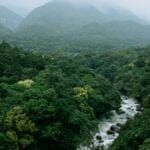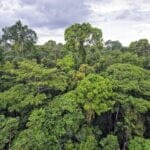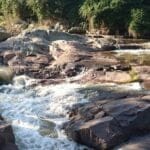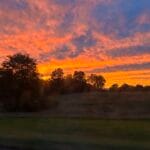Let’s venture into the magical world of deciduous forests, where trees don colorful foliage like nature’s artists. These enchanting realms are bustling with life, from towering trees to the hidden world of the forest floor. Dive in and discover their amazing secrets, like how they change with the seasons and how they keep the balance of nature in check. Get ready for a captivating journey where nature’s beauty and wonder take center stage!
Interesting Facts About Deciduous Forests
Deciduous forests, with their constantly changing scenery, are more than just a collection of trees – they’re bustling hubs of life and fascinating ecosystems. Here’s a peek into what makes them so interesting:
Life Finds a Way: Adapting to the Seasons
Unlike their evergreen cousins, deciduous trees ditch their leaves each fall, creating a breathtaking spectacle of color. This dramatic change isn’t just for show, though. As temperatures drop, these clever trees likely conserve energy by shedding leaves and entering a sort of winter slumber.
But the forest floor isn’t just a leaf graveyard. It teems with decomposers, breaking down the fallen foliage and recycling nutrients back into the soil. This natural composting creates a nutrient-rich environment for a whole host of plants and fungi.
And speaking of adaptations, the animals here are pros at dealing with the ever-shifting seasons. Some, like birds, just pack up and migrate to warmer areas when winter arrives. Others, like bears, go for the long nap option, hibernating through the coldest months. Squirrels, on the other hand, are masters of preparation, stashing away nuts and seeds to see them through the lean times.
A Forest in Disguise: The Art of Blending In
Camouflage is the name of the game in the deciduous forest. Animals here have evolved some pretty incredible ways to disappear into their surroundings. Take the chameleon, for example, a master of disguise that can change its skin color to match its environment.
But it’s not just about color. Insects like walking sticks have taken camouflage to a whole new level, evolving bodies that mimic twigs and branches so convincingly that predators often walk right past them. And then there are the owls, with their mottled feathers that allow them to blend seamlessly into the bark of trees, becoming silent, feathered ninjas of the night.
This constant game of hide-and-seek is a crucial part of the delicate balance of the deciduous forest, where survival often depends on not being seen – either by predators looking for a meal or prey trying to avoid becoming one.
From North America to Asia: A Global Tapestry
Deciduous forests aren’t just a one-size-fits-all kind of ecosystem. They exist all over the world, from the rolling hills of North America to the mountains of Asia. Each forest has its own unique blend of tree species, animal life, and environmental conditions.
For instance, the deciduous forests of eastern North America are known for their vibrant autumn displays, where maples, oaks, and hickories erupt in a fiery blaze of reds, oranges, and yellows.
Over in Europe, beech and oak forests dominate the landscape, providing homes for a diverse array of wildlife, including wild boar, deer, and badgers.
More Than Meets the Eye: Unraveling the Mysteries
Despite all we know about deciduous forests, there’s still so much more to discover. Scientists are constantly making new findings about the complex relationships between species, the impact of climate change, and the secrets hidden within these rich ecosystems.
We’re just beginning to scratch the surface of understanding the intricate web of life that exists in these forests, and who knows what other fascinating secrets await us?
What Defines a Deciduous Forest?
Deciduous forests are defined by their namesake characteristic: deciduous trees. These trees undergo a dramatic cycle of shedding their leaves in the fall and regrowing them in the spring. Scientists believe this process helps them conserve energy during the colder months when sunlight is less available.
Climate and Adaptations
Deciduous forests typically experience moderate temperatures and receive ample rainfall throughout the year. This climate, combined with the nutrient-rich soil created by decomposing leaves, allows a diverse range of plants and animals to thrive. The animals that call these forests home have developed various adaptations to survive the changing seasons, including camouflage, migration, and hibernation.
Layers of Life
Within a deciduous forest, life is structured in distinct layers:
- Canopy: The canopy is the uppermost layer, formed by the crowns of the tallest trees. This leafy ceiling is a hub of activity for birds, insects, and some mammals.
- Understory: Beneath the canopy lies the understory, a shaded realm where shrubs, wildflowers, and ferns flourish. This layer provides shelter and food for a variety of creatures.
- Forest Floor: The forest floor might seem quiet, but it’s a hive of unseen activity. Decomposers like fungi, bacteria, and insects break down organic matter, recycling nutrients back into the soil.
Importance and Conservation
Deciduous forests play a vital role in the health of our planet. The trees absorb carbon dioxide from the atmosphere and release oxygen, helping to regulate the climate. Protecting these forests is crucial for maintaining biodiversity and ensuring a sustainable future.
The Diverse Life in Deciduous Forests: From Canopy to Forest Floor
Deciduous forests are teeming with life, from the top of the canopy to the depths of the forest floor. Each layer of the forest supports a unique community of plants and animals, all interconnected in a delicate balance.
Canopy: The High Life
The canopy is the highest layer of the forest, where the crowns of the tallest trees form a dense, leafy ceiling. This sun-drenched realm is a hub of activity, with birds building nests, insects buzzing among the leaves, and agile mammals like squirrels leaping from branch to branch.
Understory: A World of Shade and Shelter
Below the canopy, the understory offers a more subdued environment. Filtered sunlight creates a mosaic of light and shadow, nurturing a diverse array of plants, including shrubs, ferns, and wildflowers. This layer provides essential shelter and foraging grounds for a variety of animals, from deer browsing on leaves to salamanders seeking cool, moist refuge.
Forest Floor: The Recycling Center
The forest floor might seem like a quiet carpet of fallen leaves, but beneath the surface lies a hidden world teeming with life. Decomposers such as fungi, bacteria, and insects work tirelessly to break down organic matter – fallen leaves, branches, and even dead animals – recycling nutrients back into the soil. This rich, fertile soil nourishes the trees and plants, completing the cycle of life.
Seasonal Changes: A Symphony of Adaptation
One of the most remarkable aspects of deciduous forests is the way life adapts to the ever-changing seasons. Animals have developed a fascinating array of strategies to cope with the temperature swings, from growing thicker fur for insulation to migrating to warmer regions.
A Connected Ecosystem
Every plant and animal in a deciduous forest plays a crucial role in the intricate web of life. Herbivores graze on plants, providing energy for carnivores higher up the food chain. When organisms die, decomposers break them down, returning nutrients to the soil, which in turn nourishes new plant life. This interconnectedness highlights the importance of protecting these valuable ecosystems.
How Do Animals Survive the Changing Seasons in Deciduous Forests?
Animals that live in deciduous forests have evolved a remarkable array of adaptations to survive the challenges posed by the changing seasons.
Physical Adaptations
- Thick Fur and Feathers: As temperatures drop, many animals grow a thicker coat of fur or feathers to provide insulation against the cold. This natural insulation helps them conserve body heat and stay warm throughout the winter.
- Camouflage: The changing colors of the deciduous forest provide excellent camouflage opportunities. Some animals, like the chameleon, can even change their skin color to match their surroundings, making them nearly invisible to predators.
Behavioral Adaptations
- Migration: Some animals, particularly birds, choose to avoid the harsh winter conditions altogether by migrating to warmer regions. These long-distance travelers rely on instinct and environmental cues to navigate to their seasonal destinations.
- Hibernation: Animals like bears and squirrels opt for a different strategy: hibernation. They spend the winter months in a state of deep sleep, slowing down their metabolism and surviving on stored body fat.
- Food Storage: Squirrels and other animals that don’t hibernate often rely on food storage to survive the winter. They spend the fall months diligently gathering nuts, seeds, and other food items, stashing them away in caches for later consumption.
The Forest Provides
The deciduous forest itself provides essential resources that help animals survive throughout the year:
- Shelter: Trees offer vital shelter from the elements and provide safe havens for nesting and raising young.
- Food: The forest offers a diverse menu of food sources, from leaves and fruits to nuts, seeds, insects, and small animals.
- Water: Rivers, streams, and ponds within deciduous forests provide essential water sources for drinking and support a variety of aquatic life.
Our understanding of animal adaptations in deciduous forests is constantly evolving as scientists conduct new research. Climate change might be impacting these delicate balances, making it more important than ever to protect these incredible ecosystems.
Internal Links:
- The Amazon rainforest is the largest rainforest in the world, and it’s home to an incredible array of plant and animal life. Click here for more Amazon rainforest facts.
- Temperate and tropical rainforests are two of the most common types of rainforests in the world. They have similar climates, but they also have some important differences. Discover the differences between them by clicking here compare and contrast temperate and tropical rainforests.
- The rainforest provides us with many things, but do you know its facts? Click here for 10 facts about the rainforest.
- DeNunzio Pool: Your Complete Guide to Princeton’s Aquatic Center - November 22, 2024
- Dave Leip’s Atlas: Your Go-To Guide for US Election Data (1789-Present) - November 22, 2024
- Darren Centinello: The Untold Story of Elizabeth Pipko’s Husband and Political Strategist - November 22, 2024
